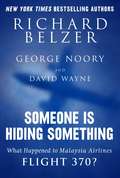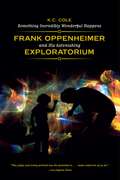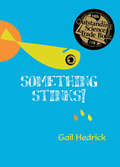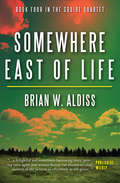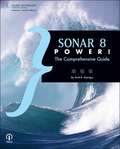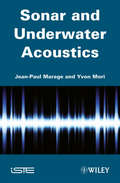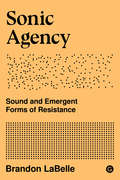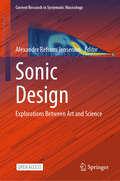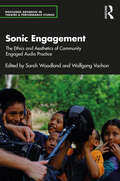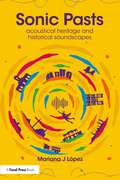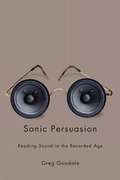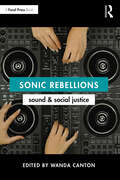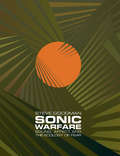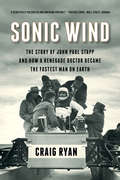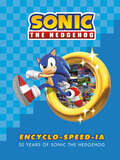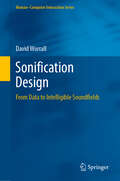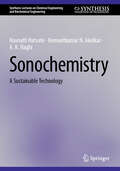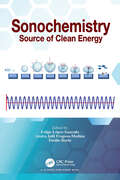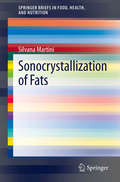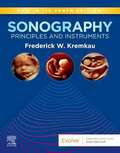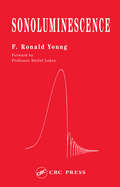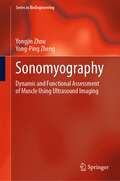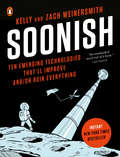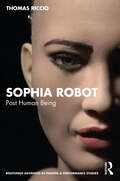- Table View
- List View
Someone Is Hiding Something: What Happened to Malaysia Airlines Flight 370?
by George Noory Richard Belzer David WayneA year after the disappearance and commencement of the international search for Malaysia Airlines Flight 370, no sign of the plane has been found--no debris, no bodies, no sign of the much-talked-about black box. Richard Belzer, George Noory, and David Wayne want to know why. Scrutinizing the theories the media and politicians claim are the "most likely” reasons the plane crashed, Belzer, Noory, and Wayne argue that if a year after a huge Boeing 777 has gone missing, and there’s still no sign of it whatsoever, it’s time to think outside the box. The public needs to stop being misled. If a plane and its passengers went "missing" once, what's to stop it from happening again? Some of the theories the authors consider seem implausible on the surface, but the thorough research they've done and the continual failure of politicians, aviation authorities, and military members around the world to give any indication they're wrong makes their arguments as good--if not better--than the more widely shared ones. The title of this thought-provoking volume, Someone is Hiding Something, is a line spoken by former Malaysian Prime Minister Mahathir Mohamad--perhaps the only government official to publicly acknowledge the true reason that neither Flight 370 nor the 239 people onboard have been found.
Something Incredibly Wonderful Happens: Frank Oppenheimer and His Astonishing Exploratorium
by K.C. ColeHow do we reclaim our innate enchantment with the world? And how can we turn our natural curiosity into a deep, abiding love for knowledge? Frank Oppenheimer, the younger brother of the physicist J. Robert Oppenheimer, was captivated by these questions, and used his own intellectual inquisitiveness to found the Exploratorium, a powerfully influential museum of human awareness in San Francisco, that encourages play, creativity, and discovery—all in the name of understanding. In this elegant biography, K. C. Cole investigates the man behind the museum with sharp insight and deep sympathy. The Oppenheimers were a family with great wealth and education, and Frank, like his older brother, pursued a career in physics. But while Robert was unceasingly ambitious, and eventually came to be known for his work on the atomic bomb, Frank’s path as a scientist was much less conventional. His brief fling with the Communist Party cost him his position at the University of Minnesota, and he subsequently spent a decade ranching in Colorado before returning to teaching. Once back in the lab, however, Frank found himself moved to create something to make the world meaningful after the bombing of Hiroshima and Nagasaki. He was inspired by European science museums, and he developed a dream of teaching Americans about science through participatory museums. Thus was born the magical world of the Exploratorium, forever revolutionizing not only the way we experience museums, but also science education for years to come. Cole has brought this charismatic and dynamic figure to life with vibrant prose and rich insight into Oppenheimer as both a scientist and an individual.
Something Stinks!
by Gail HedrickDead fish are washing ashore on the Higdon River, and seventh grader Emily Sanders decides to find out why. Mocked by her fellow students and abandoned by her best friend, Emily investigates farms, a golf course, and local factories. Gradually she persuades friends to help her test the waters. Their investigations lead them into trouble with the law and confrontation with the town's most powerful citizen. Can a handful of determined seventh graders find out the true source of the stink in the Higdon River?
Somewhere East of Life: Life In The West, Forgotten Life, Remembrance Day, And Somewhere East Of Life (The Squire Quartet #4)
by Brian W. AldissFourth in the acclaimed Squire Quartet—from the author of &“Supertoys Last All Summer Long,&” the basis for the movie A.I.: Artificial Intelligence. Architectural historian Roy Burnell has been tasked with traveling the globe and listing architectural gems in danger of being destroyed. But when Burnell is in Budapest, ten years of his memory, mostly his architectural knowledge and sexual experiences, are stolen. In this near-future, thieves using EMV (&“e-mnemonicvision&”) sell memories on the black market. In the wake of this event, Burnell tries to resume his life, while also searching for the &“bullet&” that will restore his memory. Winner of two Hugo Awards, one Nebula Award, and named a Grand Master by the Science Fiction Writers of America, Brian W. Aldiss challenged readers&’ minds for over fifty years with literate, thought-provoking, and inventive science fiction. &“Aldiss weaves these thoughts into a delightful and sometimes harrowing story, proving once again that science fiction can illuminate vital matters of the present as effectively as any genre.&” —Publishers Weekly This ebook includes an introduction by the author.
Sonar 8 Power! The Comprehensive Guide
by Scott R. GarrigusSonar 8 Power! is the most recent edition of the best-selling Sonar Power book series providing detailed training for Cakewalk's Sonar 8 music recording software. Written for both new users and veteran upgraders alike, Sonar 8 Power! walks you through all of the features of the software with step-by-step instructions and exercises. New users will start at the beginning and learn everything they need to know to use Sonar 8 for recording, editing, producing, mixing, and bringing their music to the masses. Upgraders will learn about all the new features in Sonar 8 as well as enhancements to existing features that may affect their current production work flow.
Sonar and Underwater Acoustics
by Jean-Paul Marage Yvon MoriSonar and Underwater Acoustics brings together all the concepts necessary for designers and users of sonar systems. Unlike other books on this subject, which are often too specialized, this book is accessible to a wider audience. The first part focuses on the acoustic environment, antenna structures, and electric acoustic interface. The latter provides knowledge required to design, as well as the development and implementation of chain processes for an active sonar from the conditioning input to output processing. The reader will find a comprehensive range of all problems encountered in underwater acoustics for a sonar application, from physical phenomena governing the environment and the corresponding constraints, through to the technical definition of transducers and antennas, and the types of signal processing involved. In one section, measures in underwater acoustics are also proposed.
Sonic Agency: Sound and Emergent Forms of Resistance (Goldsmiths Press / Sonics Series #1)
by Brandon LabelleA timely exploration of whether sound and listening can be the basis of political change.In a world dominated by the visual, could contemporary resistances be auditory? This timely and important book from Goldsmiths Press highlights sound's invisible, disruptive, and affective qualities and asks whether the unseen nature of sound can support a political transformation. In Sonic Agency, Brandon LaBelle sets out to engage contemporary social and political crises by way of sonic thought and imagination. He divides sound's functions into four figures of resistance—the invisible, the overheard, the itinerant, and the weak—and argues for their role in creating alternative “unlikely publics” in which to foster mutuality and dissent. He highlights existing sonic cultures and social initiatives that utilize or deploy sound and listening to address conflict, and points to their work as models for a wider movement. He considers issues of disappearance and hidden culture, nonviolence and noise, creole poetics, and networked life, aiming to unsettle traditional notions of the “space of appearance” as the condition for political action and survival.By examining the experience of listening and being heard, LaBelle illuminates a path from the fringes toward hope, citizenship, and vibrancy. In a current climate that has left many feeling they have lost their voices, it may be sound itself that restores it to them.
Sonic Design: Explorations Between Art and Science (Current Research in Systematic Musicology #12)
by Alexander Refsum JenseniusThis open access book offers a historical context and an overview of the field's current artistic and scientific research. Sonic design includes the construction and performance of acoustic instruments but also recording, editing, mixing, and synthesizing sounds using analog and digital electronic devices. This book explores sonic design from the perspectives of music theory, music perception, embodied cognition, phenomenology, soundscape studies, acoustics, new interfaces for musical expression, sound and music computing, and music information retrieval. The chapters are selected contributions from an international seminar organized to celebrate the achievements of Professor Rolf Inge Godøy at the University of Oslo. As a composer, researcher, teacher, and supervisor, Professor Godøy has been central in developing a holistic approach to sonic design, from theory to practice. This book offers a comprehensive overview of the field's current state, making it essential reading for students, practitioners, and researchers across a wide range of disciplines.
Sonic Engagement: The Ethics and Aesthetics of Community Engaged Audio Practice (Routledge Advances in Theatre & Performance Studies)
by Sarah Woodland Wolfgang VachonSonic Engagement examines the relationship between community engaged participatory arts and the cultural turn towards audio, sound, and listening that has been referred to as the 'sonic turn'. This edited collection investigates the use of sound and audio production in community engaged participatory arts practice and research. The popularity of podcast and audio drama, combined with the accessibility and portability of affordable field recording and home studio equipment, makes audio a compelling mode of participatory creative practice. This book maps existing projects occurring globally through a series of case study chapters that exemplify community engaged creative audio practice. The studies focus on audio and sound-based arts practices that are undertaken by artists and arts-led researchers in collaboration with (and from within) communities and groups. These practices include—applied audio drama, community engaged podcasting, sound and verbatim theatre, participatory sound art, community-led acoustic ecology, sound and media walks, digital storytelling, oral history and reminiscence, and radio drama in health and community development. The contributors interrogate the practical, political, and aesthetic potentialities of using sound and audio in community engaged arts practice, as well as its tensions and possibilities as an arts-led participatory research methodology. This book provides the first extensive analysis of what sound and audio brings to participatory, interdisciplinary, arts-led approaches, representing a vital resource for community arts, performance practice, and research in the digital age.
Sonic Pasts: Acoustical Heritage and Historical Soundscapes
by Mariana J LópezSonic Pasts explores the fields of acoustical heritage and historical soundscapes through an interdisciplinary perspective. Reflecting on different methods of research and dissemination, it critiques biases related to race, ethnicity, gender, socioeconomics, and disability that are intrinsic to these fields.Academically rigorous while also deeply personal, Sonic Pasts introduces readers to how various disciplines have studied the sounds of the past, the connection those studies have to heritage more widely, including the concept of Intangible Cultural Heritage (ICH), and how sound is represented within UNESCO heritage listings. It offers a novel theoretical and practical framework on different approaches to the design of sound installations and online experiences on the topic, including the ethical challenges presented by different techniques.This book is essential reading for students and researchers considering sounds of the past, as well as sound and heritage practitioners seeking to reflect on their current or future practices.
Sonic Persuasion: Reading Sound in the Recorded Age
by Greg GoodaleSonic Persuasion: Reading Sound in the Recorded Age critically analyzes a range of sounds on vocal and musical recordings, on the radio, in film, and in cartoons to show how sounds are used to persuade in subtle ways. Greg Goodale explains how and to what effect sounds can be "read" like an aural text, demonstrating this method by examining important audio cues such as dialect, pausing, and accent in presidential recordings at the turn of the twentieth century. Goodale also shows how clocks, locomotives, and machinery are utilized in film and literature to represent frustration and anxiety about modernity, and how race and other forms of identity came to be represented by sound during the interwar period. In highlighting common sounds of industry and war in popular media, Sonic Persuasion also demonstrates how programming producers and governmental agencies employed sound to evoke a sense of fear in listeners. Goodale provides important links to other senses, especially the visual, to give fuller meaning to interpretations of identity, culture, and history in sound.
Sonic Rebellions: Sound and Social Justice
by Wanda CantonSonic Rebellions combines theory and practice to consider contemporary uses of sound in the context of politics, philosophy, and protest, by exploring the relationship between sound and social justice, with particular attention to sonic methodologies not necessarily conceptualised or practiced in traditional understandings of activism.An edited collection written by artists, academics, and activists, many of the authors have multidimensional experiences as practitioners themselves, and readers will benefit from never-before published doctoral and community projects, and innovative, audio-based interpretations of social issues today. Chapters cover the use of soundscapes, rap, theatre, social media, protest, and song, in application to contemporary socio-political issues, such as gentrification, neoliberalism, criminalisation, democracy, and migrant rights. Sonic Rebellions looks to encourage readers to become, or consider how they are, Sonic Rebels themselves, by developing their own practices and reflections in tandem to continue the conversation as to how sound permeates our sociopolitical lives.This is an essential resource for those interested in how sound can change the world, including undergraduates and postgraduates from across the social sciences and humanities, scholars and instructors of sound studies and sound production, as well as activists, artists, and community organisers.
Sonic Warfare: Sound, Affect, and the Ecology of Fear (Technologies of Lived Abstraction)
by Steve GoodmanAn exploration of the production, transmission, and mutation of affective tonality—when sound helps produce a bad vibe. Sound can be deployed to produce discomfort, express a threat, or create an ambience of fear or dread—to produce a bad vibe. Sonic weapons of this sort include the “psychoacoustic correction” aimed at Panama strongman Manuel Noriega by the U.S. Army and at the Branch Davidians in Waco by the FBI, sonic booms (or “sound bombs”) over the Gaza Strip, and high-frequency rat repellants used against teenagers in malls. At the same time, artists and musicians generate intense frequencies in the search for new aesthetic experiences and new ways of mobilizing bodies in rhythm. In Sonic Warfare, Steve Goodman explores these uses of acoustic force and how they affect populations. Traversing philosophy, science, fiction, aesthetics, and popular culture, he maps a (dis)continuum of vibrational force, encompassing police and military research into acoustic means of crowd control, the corporate deployment of sonic branding, and the intense sonic encounters of sound art and music culture.Goodman concludes with speculations on the not yet heard—the concept of unsound, which relates to both the peripheries of auditory perception and the unactualized nexus of rhythms and frequencies within audible bandwidths.
Sonic Wind: The Story of John Paul Stapp and How a Renegade Doctor Became the Fastest Man on Earth
by Craig RyanThe untold story of an eccentric, scientific visionary whose death-defying research has saved millions of lives. Sixty years ago, cars and airplanes were still deathtraps waiting to happen. Today, both are safer than ever, thanks in part to one pioneering air force doctor's research on seatbelts and ejection seats. The exploits of John Paul Stapp (1910-1999) come to thrilling life in this biography of a Renaissance man who was once blasted--faster than a .45 caliber bullet--across the desert in his Sonic Wind rocket sled, only to be slammed to a stop in barely a second. The experiment put him on the cover of Time magazine and allowed his swashbuckling team to gather the data needed to revolutionize automobile and aircraft design. But Stapp didn't stop there. From the legendary high-altitude balloon tests that ensued to the ferocious battles for car safety legislation, Craig Ryan's book is as much a history of America's transition into the Jet Age as it is a biography of the man who got us there safely.
Sonic the Hedgehog Encyclo-speed-ia
by Ian Flynn SEGACelebrate Sonic the Hedgehog's 30th anniversary with a full-color hardcover historical retrospective that explores nearly every one of the blue speedster's video game appearances!Dive deep into the extensive lore and exhaustive detail of each game in Sonic's ever-expanding universe--from the beloved SEGA Genesis to the most bleeding-edge video game consoles. This tome leaves no stone unturned, showcasing in-depth looks at the characters, settings, and stories from each exciting installment!Dark Horse Books and SEGA present the Sonic the Hedgehog Encyclo-Speed-ia--a must-have volume for any fan of Sonic, young or old!
Sonification Design: From Data to Intelligible Soundfields (Human–Computer Interaction Series)
by David WorrallThe contemporary design practice known as data sonification allows us to experience information in data by listening. In doing so, we understand the source of the data in ways that support, and in some cases surpass, our ability to do so visually. In order to assist us in negotiating our environments, our senses have evolved differently. Our hearing affords us unparalleled temporal and locational precision. Biological survival has determined that the ears lead the eyes. For all moving creatures, in situations where sight is obscured, spatial auditory clarity plays a vital survival role in determining both from where the predator is approaching or to where the prey has escaped. So, when designing methods that enable listeners to extract information from data, both with and without visual support, different approaches are necessary. A scholarly yet approachable work by one of the recognized leaders in the field of auditory design, this book will - Lead you through some salient historical examples of how non-speech sounds have been used to inform and control people since ancient times. - Comprehensively summarize the contemporary practice of Data Sonification. - Provide a detailed overview of what information is and how our auditory perceptions can be used to enhance our knowledge of the source of data. - Show the importance of the dynamic relationships between hearing, cognitive load, comprehension, embodied knowledge and perceptual truth. - Discuss the role of aesthetics in the dynamic interplay between listenability and clarity. - Provide a mature software framework that supports the practice of data sonification design, together with a detailed discussion of some of the design principles used in various examples. David Worrall is an internationally recognized composer, sound artist and interdisciplinary researcher in the field of auditory design. He is Professor of Audio Arts and Acoustics at Columbia College Chicago and a former elected president of the International Community for Auditory Display (ICAD), the leading organization in the field since its inception over 25 years ago.Code and audio examples for this book are available athttps://github.com/david-worrall/springer/ Here is an excellent review of the book by Dr Gregory Kramer: “Worrall proceeds bravely through the trees and vines of philosophy, information theory, aesthetics, and other contributors to sonification design theory. It’s a feat. He nails all of this down with the specific implementation system he’s designed over many years, and applies his theories to specific problems. In a field of research still in its first half century and setting its bearings in a world where human perception has become a sideshow to machine learning, deep learning, and artificial intelligence, the roots David provides will serve well.” Dr Gregory Kramer is the founding figure in the emerging field of sonification, founded the International Conference on Auditory Display (ICAD) and editor of the first book in the field, "Auditory Display: Sonification, Audification and Auditory Interfaces" (Addison Wesley, 1994).
Sonoanatomy for Anaesthetists
by Michael Jones Aamer Ahmed Edward Lin Atul GaurThe accuracy with which clinicians can locate nerves and blood vessels has increased greatly with the development of portable handheld ultrasound scanners, and no specialty has felt the benefit more than anesthesia. This practical atlas of ultrasound anatomy addresses the two main challenges for anyone learning ultrasound-guided techniques: 1. Where do I place the probe? 2. What exactly am I looking at? Each nerve block or vascular access site is illustrated with: an anatomical line illustration a clinical photograph showing the correct ultrasound probe position the ultrasound scan a line illustration of the scan labelled to indicate the salient anatomical features All relevant anatomic regions are included: upper limb, lower limb, neck, thorax and abdomen. Concise notes for each entry indicate scan landmarks and give useful tips and advice on potential complications. Sonoanatomy for Anesthetists is an essential resource for anesthetists, intensivists and chronic pain specialists.
Sonochemistry: A Sustainable Technology (Synthesis Lectures on Chemical Engineering and Biochemical Engineering)
by A. K. Haghi Navnath Hatvate Hemantkumar N. AkolkarThe study of the effects of ultrasound waves on a chemical reaction is known as sonochemistry. Ultrasound radiation (between 20 kHz and 2 MHz) is used to drive chemical and physical processes in solution. When ultrasound waves pass through liquid, they generate tiny bubbles that expand and then collapse quickly. This process releases energy, which can speed up the chemical reactions. Sonochemistry is considered a sustainable technology because it often utilizes less energy, requires fewer toxic chemicals, and generates less waste compared to traditional chemical processes. Ultrasound waves are utilized in various processes including synthesis, crystallization, and purifications and find applications in various sectors like pharmaceuticals, material sciences, agriculture, food processing, and environment science. This book is focused on applications of sonochemistry. It begins by explaining the basics of the technology and moves on to describing applications in the fields of chemistry, chemical engineering, and environmental engineering, and discussed applications currently being developed and future outlook.
Sonochemistry: Source of Clean Energy
by Felipe López-Saucedo Emilio Bucio Amira Jalil Fragoso-MedinaThis book explores the most pertinent aspects and advancements in sonochemistry, dedicating nine chapters to fundamentals, synthesis methods, and applications. Covering ultrasound as the primary energy source, the initial chapters cover the interaction of ultrasound waves with matter and its diverse applications across various fields. The text further delves into the synthesis of nanomaterials and nanocomposites under varying reaction conditions. Finally, the book examines specific topics, including the application of sonochemistry in wastewater treatment, catalysts, sensors, meat processing, and food packaging. These insights indicate that sonochemistry is an emerging science with promising applications extending beyond the confines of the laboratory.
Sonocrystallization of Fats
by Silvana MartiniSonocrystallization of Fats will summarize the latest research efforts and discoveries in the relatively new area of sonocrystallization of edible lipids. Ultrasound has been used extensively in the past to induce the crystallization of molecules. Until recently, however, very little work has been done using power ultrasound to induce the crystallization of edible lipids and understand how the phenomena applies in these systems. Power ultrasound is used in fats to induce their crystallization and to generate small crystals, which ultimately result in a harder material. Since the elimination of trans-fats from food products, novel processing technologies have been sought to improve the functional properties of low saturated, no-trans lipids. Power ultrasound can be used as a new processing condition to modify the crystallization of fats and tailor their functional properties to specific food uses. This Springer Brief will describe recent research performed in the area of sonocrystallization of fats and the possible application in the food industry. An overview of ultrasound theories will be presented at the beginning of the book followed by a brief description of the uses of power ultrasound in the food industry. Description of recent research in the area of fat sonocrystallization and detailed information regarding the experimental conditions used, such as type of equipment and ultrasound settings, will be presented. The book will end with a description of the future trends in sonocrystallization of fats in the food industry.
Sonography Principles and Instruments
by Frederick W. KremkauEnhance your imaging skills with the latest sonographic technologies and prepare for the ARDMS SPI certification exam! Sonography: Principles and Instruments, 10th Edition explains how diagnostic ultrasound works and covers the essentials of ultrasound physics and instrumentation, including Doppler imaging, artifacts, safety, and quality assurance. More than 1,300 illustrations include ultrasound scans, helping to demonstrate imaging anatomy, motion, and flow. <p><p>In simplifying complicated concepts, Dr. Kremkau succeeds where other texts do not. With the right blend of imaging fundamentals, current techniques, and exam practice questions, this book is ideal for both students and experienced practitioners.
Sonoluminescence
by F. Ronald YoungWhile it is still a mystery of how a low-energy-density sound wave can concentrate enough energy in a small enough volume to cause the emission of light, research in acoustic cavitation and sonoluminescence has lead to plausible theories in which the source of light can be experimentally sustained. It has also lead to promising applications, such a
Sonomyography: Dynamic and Functional Assessment of Muscle Using Ultrasound Imaging (Series in BioEngineering)
by Yong-Ping Zheng Yongjin ZhouThis book explains the exciting field of sonomyography (SMG), which makes it possible to use continuous signals detected by ultrasound images in real time to evaluate muscle functions. After an introduction, the book discusses the methods to extract and analyse different SMG signals, including muscle thickness, penetration angle, fascicle length, contraction activity, and muscle cross-sectional areas, etc. It then describes the mono-modal applications of sonomyography: posture recognition, prosthesis control, muscle training, muscle strength (fall risk assessment), fatigue assessment, and the assessment of dysfunctional muscles. The book also shows how to combine sonomyography with additional muscle assessment methods, in particular EMG, MMG, and motion sensors. Lastly, it provides an overview of the potential applications in sport science, rehabilitation, fitness, and elderly health.
Soonish: Ten Emerging Technologies That'll Improve And/or Ruin Everything
by Kelly Weinersmith Zach Weinersmith<P>From a top scientist and the creator of the hugely popular web comic Saturday Morning Breakfast Cereal, a hilariously illustrated investigation into future technologies -- from how to fling a ship into deep space on the cheap to 3D organ printing What will the world of tomorrow be like? How does progress happen? And why do we not have a lunar colony already? What is the hold-up? <P> In this smart and funny book, celebrated cartoonist Zach Weinersmith and noted researcher Dr. Kelly Weinersmith give us a snapshot of what's coming next -- from robot swarms to nuclear fusion powered-toasters. By weaving their own research, interviews with the scientists who are making these advances happen, and Zach's trademark comics, the Weinersmiths investigate why these technologies are needed, how they would work, and what is standing in their way. <P>New technologies are almost never the work of isolated geniuses with a neat idea. A given future technology may need any number of intermediate technologies to develop first, and many of these critical advances may appear to be irrelevant when they are first discovered. The journey to progress is full of strange detours and blind alleys that tell us so much about the human mind and the march of civilization. <P>To this end, Soonish investigates ten different emerging fields, from programmable matter to augmented reality, from space elevators to robotic construction, to show us the amazing world we will have, you know, soonish. <P><b>A New York Times Bestseller</b>
Sophia Robot: Post Human Being (ISSN)
by Thomas RiccioThis book considers David Hanson’s robots as a performative expression of our cultural moment, serving as a paradigm for the evolution of humanoid social robots.Mechanical beings have occupied the human imagination since antiquity. Now, they inhabit the pop-cultural imagination, embodying the apotheosis of humanity’s technological aspirations and dread. Sophia, Hanson’s most advanced robot, anticipates the future as she articulates the mythic pattern, narrative, anxieties, and hopes as old as humanity. Gendered as an attractive female with a face inspired by Queen Nefertiti and Audrey Hepburn, Sophia is a cipher, avatar, and turning point that brings humanity and technology a step closer to the emergence of a post-human species. The author is a transdisciplinary artist/scholar/educator working internationally in experimental performance, indigenous performance (ritual, shamanism), and social robotics. Hanson’s robots and Sophia are examined as performance media and events, as characters evolving as post-human narratives of technological beings. The emergent, complex, and collaborative relationships social robots have with technology, AI, performance, anthropology, mythology, psychology, sociology, popular culture, social media, politics, and economics are considered.
